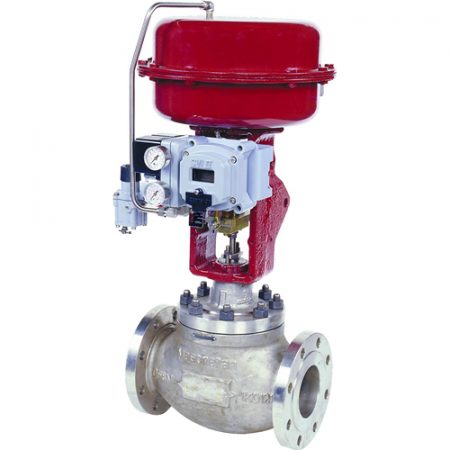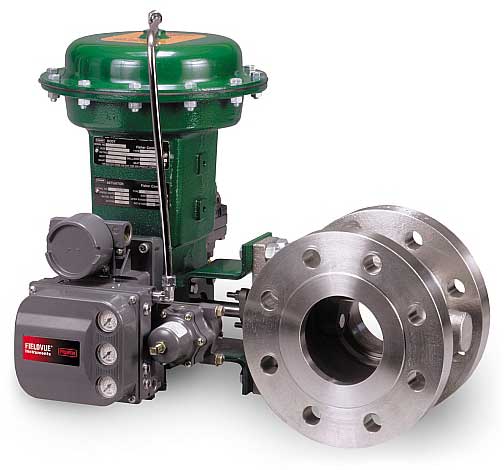Optimizing System Control with High-Performance Control Valves
Optimizing System Control with High-Performance Control Valves
Blog Article

Maximize Energy Financial Savings and Convenience With Advanced Structure Automation Controls
In the world of modern-day style and center management, the combination of advanced building automation regulates stands as a pivotal improvement. The merging of modern technology and sustainability has actually birthed a new age where energy efficiency, convenience optimization, and operational streamlining are no longer distant goals however obtainable truths. By utilizing the power of automation, structures can adapt, react, and advance in manner ins which were as soon as unimaginable. The potential for substantial power cost savings and improved comfort is not simply an opportunity yet a promise waiting to be fulfilled. This standard change in structure monitoring holds the vital to unlocking a globe where ecological conscientiousness and owner wellness harmoniously exist side-by-side within the walls of our frameworks.
Power Efficiency Conveniences
Power effectiveness benefits can significantly reduce energy consumption and functional costs in structures. Energy-efficient systems, such as innovative structure automation controls, can optimize the use of resources like heating, cooling, and illumination, leading to lower energy expenditures over time.
Moreover, improved power efficiency can extend the lifespan of building tools and systems. By running much more successfully, a/c systems, lighting fixture, and various other building parts experience less wear and tear, resulting in lowered upkeep and substitute costs. Furthermore, energy-efficient buildings commonly command greater residential or commercial property worths and rental prices, providing long-lasting financial benefits to proprietors.
Moreover, energy effectiveness can boost resident convenience and efficiency. Properly regulated interior atmospheres with optimal illumination and thermal problems create an even more pleasant and favorable office, bring about enhanced worker complete satisfaction and efficiency. Generally, the energy effectiveness advantages related to sophisticated structure automation controls are diverse, including price financial savings, ecological stewardship, and passenger health.
Enhanced Comfort Control
Enhancing convenience control in structure atmospheres calls for an innovative combination of advanced automation systems for optimum occupant well-being. By making use of sophisticated structure automation controls, facilities can customize the interior environment to satisfy the particular needs and choices of occupants. control valves.
By incorporating these sophisticated controls, structures can not only enhance convenience however also enhance power efficiency by optimizing system operations based on real tenancy and use patterns. Inevitably, prioritizing resident convenience via innovative automation systems leads to a more pleasurable and much healthier interior setting.
Operational Efficiency Improvements

Additionally, the execution of real-time surveillance and analytics devices allows building drivers to identify energy inadequacies and operational abnormalities without delay. By constantly checking energy use patterns and system performance metrics, adjustments can be made in real-time to optimize energy intake and make certain peak operational performance. control valves. In addition, incorporating need action techniques right into building automation controls can better enhance functional efficiency by dynamically changing energy use based on grid conditions and rates signals
Indoor Environment Optimization
Effective interior climate optimization is an essential facet of structure automation controls, making certain passengers' convenience and wellness while taking full advantage of energy financial savings. By using innovative sensing units and controls, developing automation systems can continuously check and additional hints readjust temperature level, moisture levels, air quality, and ventilation to develop an optimal interior environment. Maintaining constant and comfortable conditions not only improves resident satisfaction however likewise enhances efficiency and general wellness.
Interior environment optimization additionally plays a critical role in energy efficiency. By fine-tuning air conditioning, air flow, and home heating systems based upon real-time information and tenancy patterns, developing automation controls can dramatically lower power intake - control valves. Executing techniques such as demand-controlled ventilation and thermal zoning can help decrease power waste while making sure that each area of the structure gets the necessary conditioning.

Sustainable Setting Development
Building automation controls not just enhance interior environment conditions for energy performance and passenger comfort yet likewise lay the foundation for creating a lasting setting via calculated monitoring of resources and systems. By integrating sophisticated structure automation innovations, such as sensing units, actuators, and smart software program, centers can change and keep an eye on power read here usage in real-time to reduce waste and minimize their carbon impact. These systems enable anticipating upkeep, identifying possible issues before they intensify and maximizing devices efficiency to enhance durability and performance.
Moreover, lasting atmosphere creation prolongs past power management to incorporate water preservation, waste reduction, and indoor air quality improvement. Building automation controls can control water use, spot leaks, and make certain appropriate garbage disposal practices, adding to total sustainability initiatives. In addition, by regulating and monitoring ventilation and filtering systems, these innovations boost owner wellness and productivity while decreasing energy consumption associated with a/c procedures.
Conclusion
In final thought, advanced building automation controls offer considerable benefits in terms of energy savings, comfort control, operational efficiency, indoor climate optimization, and producing a lasting environment. By carrying out these controls, structures can accomplish optimal efficiency while lowering energy consumption and boosting passenger comfort. It is apparent that the usage of sophisticated automation innovation is crucial in boosting building performance and creating an extra sustainable future.
Energy efficiency advantages can significantly lower energy consumption and functional expenses in structures. Overall, the power efficiency advantages linked with innovative building automation controls are diverse, encompassing price financial savings, environmental stewardship, and passenger wellness.
In addition, incorporating demand action approaches into building automation controls can further enhance functional efficiency by dynamically adjusting energy usage based on grid conditions and pricing signals.
Building automation regulates not only optimize indoor environment problems for energy performance Web Site and occupant comfort however likewise lay the foundation for creating a lasting setting with tactical monitoring of sources and systems.In conclusion, progressed structure automation manages offer considerable benefits in terms of power financial savings, convenience control, operational efficiency, interior environment optimization, and producing a sustainable environment.
Report this page